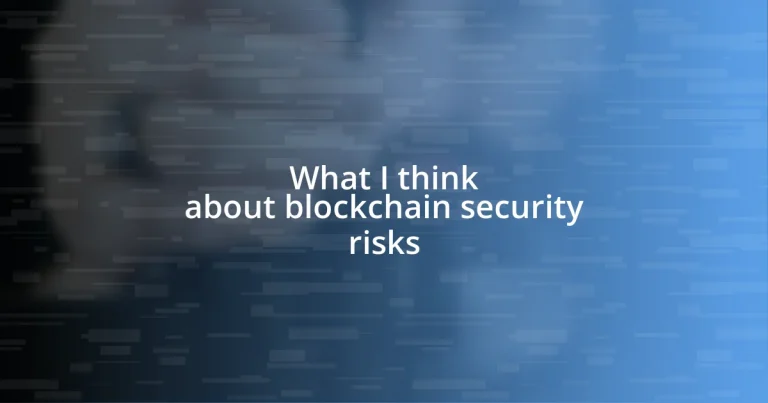Key takeaways:
- Blockchain technology enables decentralization, reducing costs and enhancing efficiency, while raising concerns about privacy and data ownership.
- Potential security risks include smart contract vulnerabilities, 51% attacks, and phishing, emphasizing the importance of user behavior and regular audits.
- Future trends such as AI integration, Layer 2 solutions, and robust regulatory frameworks are expected to enhance blockchain security and trustworthiness.
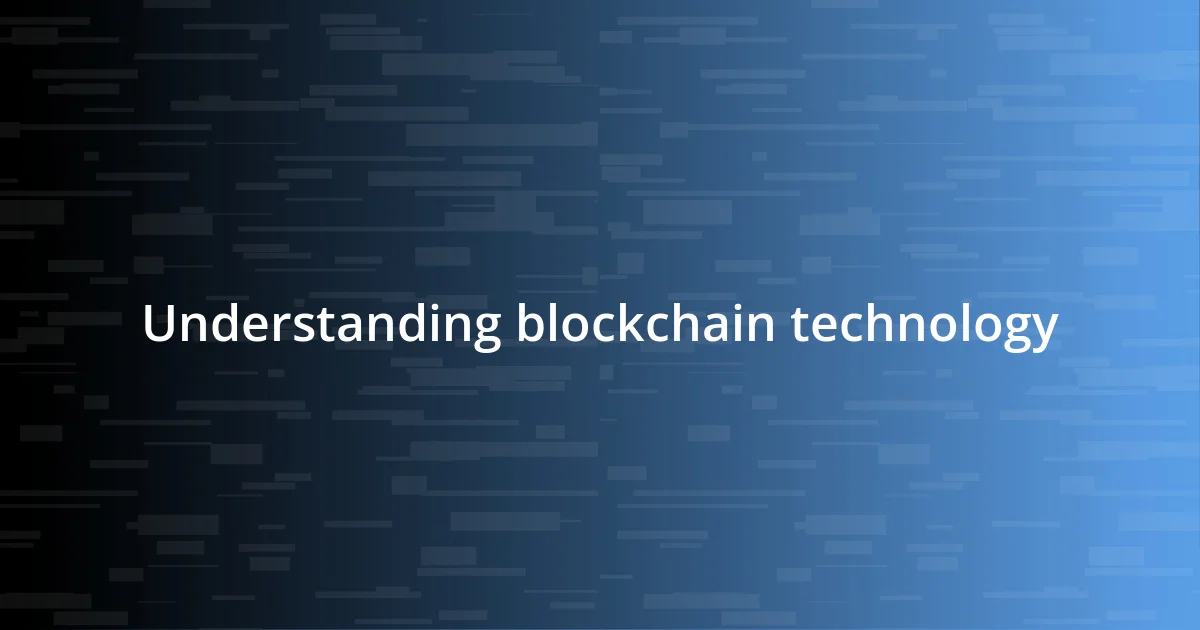
Understanding blockchain technology
Blockchain technology is a decentralized digital ledger that securely records transactions across a network of computers. It’s fascinating to think about how this technology removes the need for intermediaries, which can drastically reduce costs and increase efficiency. Have you ever wondered how this shift towards decentralization could reshape industries?
I remember when I first came across blockchain during a tech seminar; it felt like being introduced to a secret world. The idea that data is distributed across nodes rather than being stored in a single location is revolutionary. Each block in the chain is linked to the previous one, creating an immutable record. I can’t help but marvel at the implications this has for security and trust in digital transactions.
As I delve deeper into the subject, it strikes me that blockchain is not just a tech trend; it’s a paradigm shift. The transparency it offers can empower users, but it also raises questions about privacy and data ownership. How do we balance the benefits of transparency with the need for confidentiality? This is a dilemma that we must navigate as we continue to explore the potential of blockchain technology.
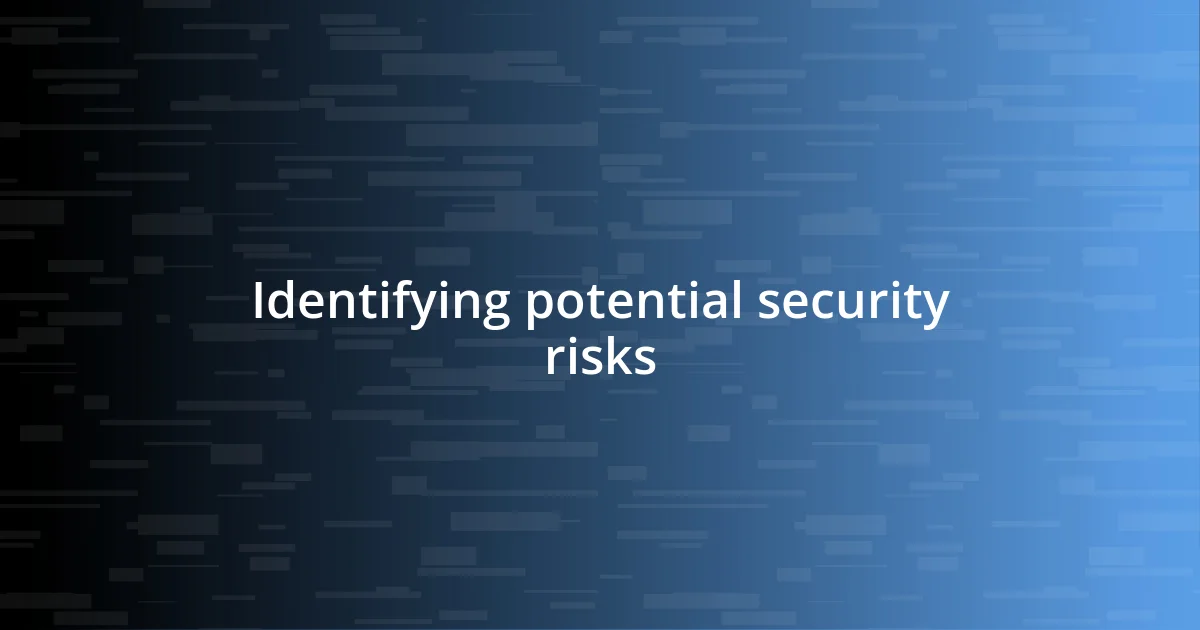
Identifying potential security risks
Identifying potential security risks within blockchain technology is a crucial step in ensuring its integrity and trustworthiness. It’s intriguing to think about how vulnerabilities can arise not from the technology itself but from its interactions with users. I once read about a major breach where hackers exploited weak security protocols to manipulate transactions. It reminded me just how important it is to recognize that the human element plays a significant role in the overall security landscape.
Here are some key potential security risks to consider:
- Smart Contract Vulnerabilities: Flaws in the code can lead to unintended behaviors, which can be exploited.
- 51% Attacks: If a single entity controls the majority of mining power, they can manipulate the blockchain.
- Phishing Attacks: Users can be tricked into revealing private keys or sensitive information.
- Software Bugs: Any coding errors in the blockchain protocol can lead to significant vulnerabilities.
- Insufficient Privacy Controls: Overexposure of transaction details can put user data at risk.
While pondering these risks, I recall a conversation with a blockchain developer who highlighted the importance of regularly auditing and testing systems. It’s an ongoing challenge in the tech world—balancing innovation and security. The thrill of new technologies like blockchain comes with the responsibility of understanding and mitigating the risks that accompany them.
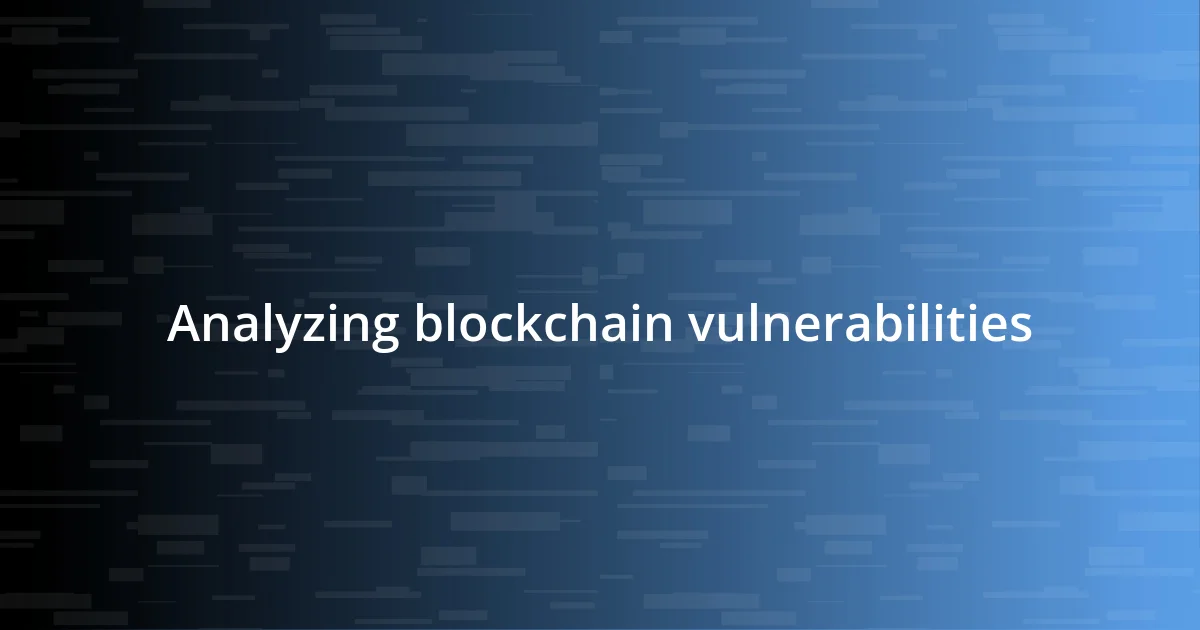
Analyzing blockchain vulnerabilities
When analyzing blockchain vulnerabilities, it’s essential to recognize that not all weaknesses stem purely from technological flaws. User behavior plays a pivotal role in the equation. I remember attending a workshop where a developer shared a story about a minor security lapse within a decentralized application. It was eye-opening to hear how a simple oversight—like failing to validate input data—led to a significant exploit that cost users thousands. Moments like these reinforce my belief that understanding both the technology and the end-users is crucial for robust security.
On a deeper level, the architecture of blockchain, often touted for its security, can still be vulnerable. For instance, I learned about the potential for bugs in smart contracts during my explorations. They can be incredibly powerful, but one incorrect line of code can create a door for attackers. This duality fascinates me; the same code designed to safeguard can also become a weakness if not crafted with precision.
To further shed light on various vulnerabilities, I’ve compiled a comparative table highlighting some common risks and the challenges they pose. Each risk has its unique footprint, which compels us to always stay alert in this fast-paced digital landscape.
| Vulnerability | Description |
|---|---|
| Smart Contract Vulnerabilities | Code flaws leading to exploitation. |
| 51% Attacks | Majority control can manipulate transactions. |
| Phishing Attacks | Tricks users into revealing sensitive information. |
| Software Bugs | Coding errors creating significant vulnerabilities. |
| Insufficient Privacy Controls | Overexposing user data and transaction details. |
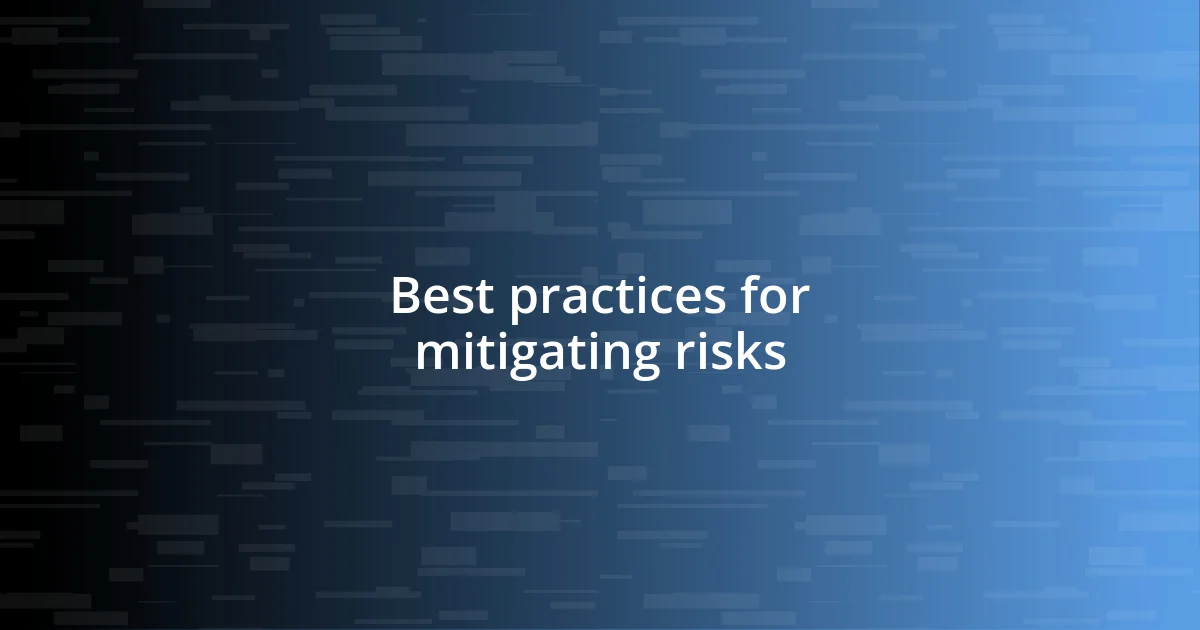
Best practices for mitigating risks
To effectively mitigate risks associated with blockchain security, implementing regular audits and testing is paramount. I can vividly recall a conversation I had with a cybersecurity expert who emphasized the need for ongoing assessments, likening it to maintaining a car—frequent checks can prevent major breakdowns. This idea resonated with me deeply; just as you wouldn’t ignore a warning light on your dashboard, neglecting security audits invites unnecessary risks.
Educating users on secure practices also plays a critical role. I once attended a seminar where a panel discussed the importance of awareness in preventing phishing attacks. It struck me how often users unknowingly compromise their own security. Sharing knowledge about recognizing phishing attempts can empower individuals to protect themselves, almost like giving them a personal shield in the digital battlefield.
Lastly, embracing multi-signature wallets adds another layer of protection. When I first encountered this technology, I was impressed by its dual approval process. It made me wonder: wouldn’t more systems benefit from a similar approach? By requiring multiple signatures to authorize a transaction, we reduce the risk of unauthorized access, turning security into a shared responsibility among users.
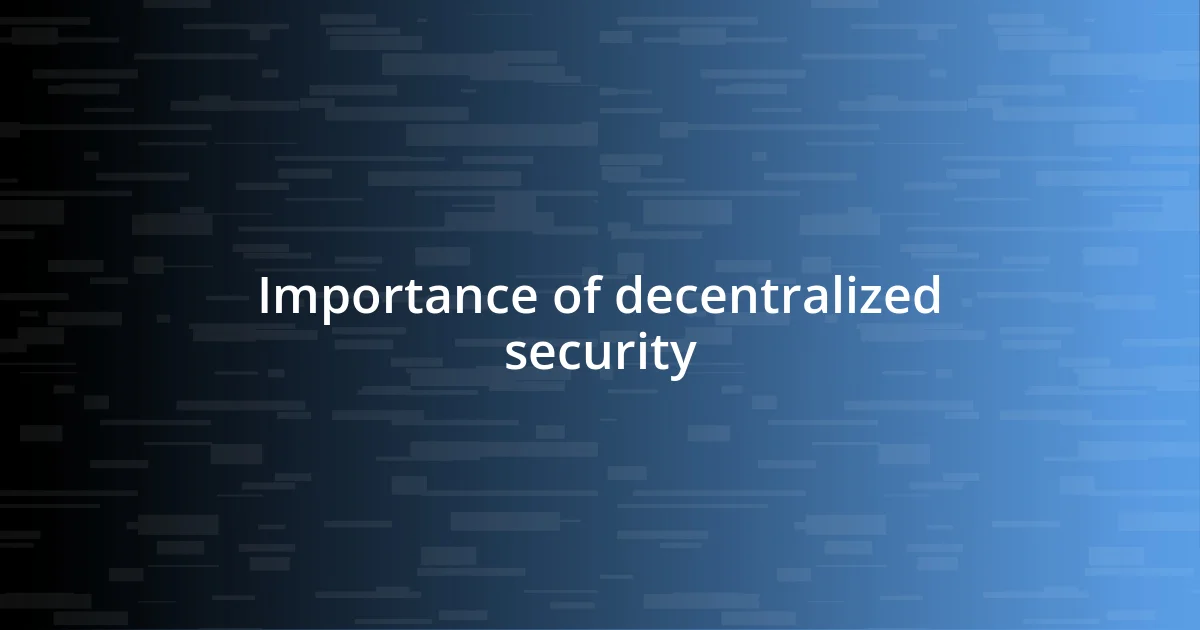
Importance of decentralized security
Decentralized security is crucial because it distributes the power and responsibility among multiple nodes, reducing the risk of a single point of failure. I remember once discussing this concept with a colleague who pointed out how traditional systems can be vulnerable to attacks. If you think about it, relying on one central authority leaves us wide open to exploitation, doesn’t it? With decentralized models, even if one part gets compromised, the whole system doesn’t collapse.
Moreover, the transparency of decentralized networks adds an additional layer of trust. During a workshop I attended, a speaker illustrated how open-source code allows anyone to scrutinize it. This reminded me of how community engagement can lead to quicker identification and fixes for vulnerabilities. I often wonder—could fostering a community of vigilant users be one of the best defenses we have against potential attacks?
In my experience, decentralization fosters resilience. Take, for instance, the way blockchain technology enables agile responses to threats. I’ve seen projects that rapidly adapt to new vulnerabilities because their decentralized nature allows for collaborative problem-solving. Isn’t it empowering to think that security is no longer solely the responsibility of a few, but instead a collective effort? This shift in mindset could very well revolutionize how we approach security in the digital age.
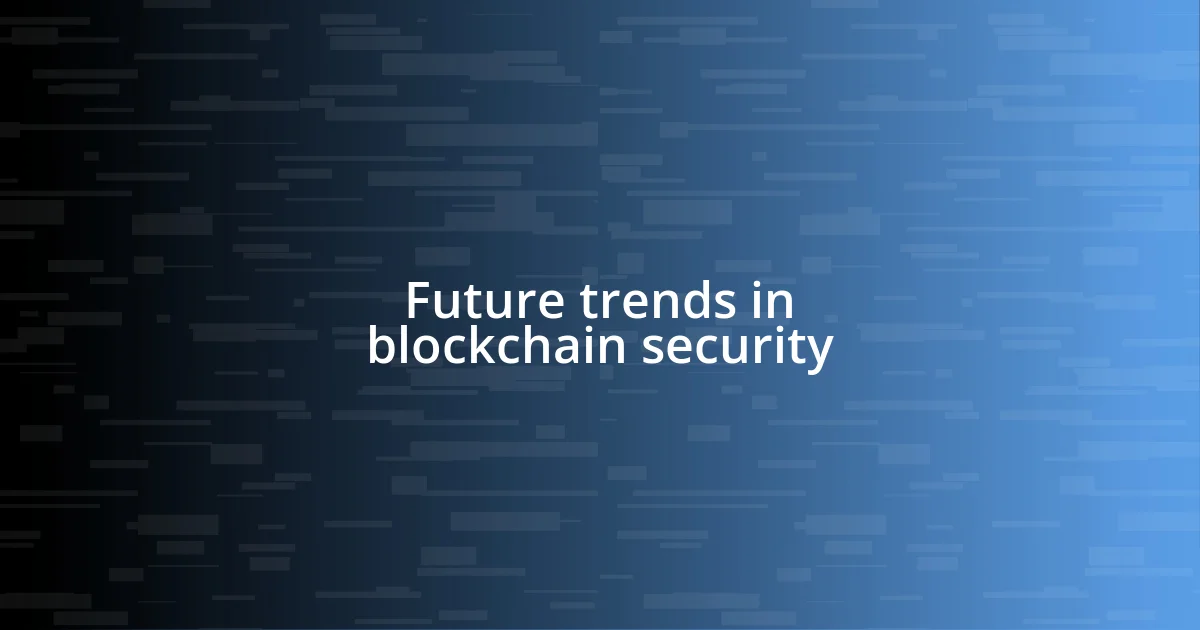
Future trends in blockchain security
As I look ahead, I can’t help but feel excited about the rise of artificial intelligence (AI) in enhancing blockchain security. I recall a recent conversation with a tech-savvy friend who explained how AI can now identify patterns and anomalies in blockchain transactions faster than any human could. Imagine the potential for reducing fraudulent activities and breaches! This makes me think: wouldn’t it be incredible if AI-driven systems could become our vigilant guardians, constantly watching over transactions and flagging unusual activities in real-time?
Another trend on the horizon is the increased adoption of Layer 2 solutions. I attended a blockchain conference where speakers highlighted how these solutions can help alleviate congestion on main networks while maintaining security. It struck me—what if scalability issues could actually enhance security instead of compromising it? With Layer 2, not only do we improve transaction speeds, but we also create additional layers of protection that can act as buffers against attacks.
I also see the potential for more robust regulatory frameworks. Reflecting on a recent podcast I listened to, where compliance and transparency were emphasized, I feel that better regulations could guide organizations in following best practices. If we think about it, stronger regulations might encourage these organizations to continuously improve their security measures. Could regulatory bodies become advocates for innovation in blockchain security? I genuinely believe this evolution will lead to a safer and more trustworthy blockchain ecosystem.












